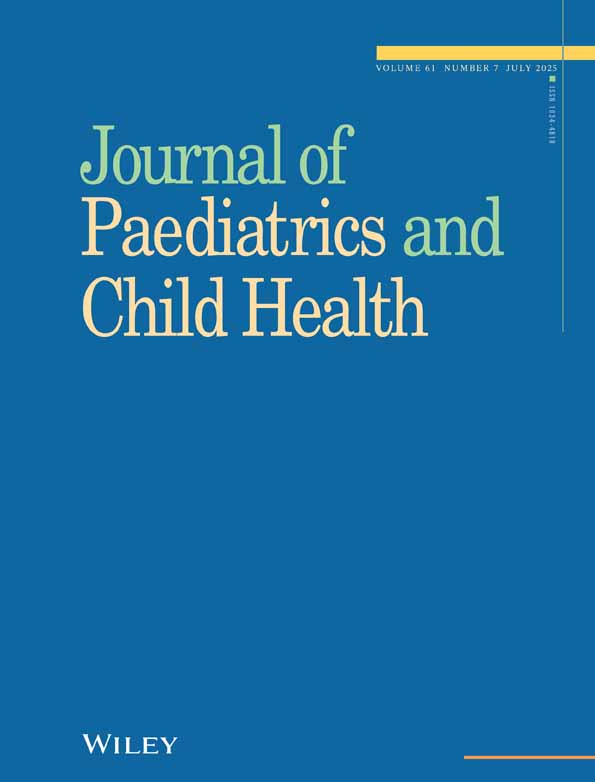Iron status and dietary iron intake of 6–24-month-old children in Adelaide
Abstract
Objective:
Chronic iron deficiency in children is associated with anaemia and impaired mental and psychomotor development. The aim of this study was to assess the iron status and dietary intake of 6–24-month-old Caucasian and Asian children living in metropolitan Adelaide.
Method:
A total of 234 healthy children (82% Caucasian and 18% Asian) aged 6–24 months were studied. Dietary iron intake of children was estimated from semiquantitative diet recall questionnaire administered to their parents. Blood samples for full blood count, serum ferritin (SF), serum iron (SI) and transferrin (TF) level estimations were obtained by venesection. Based on the laboratory test results, infants were classified as iron sufficient (IS) if the haemoglobin (Hb) concentration was >110 g L−1, SF ≥15 μg L−1, TF2 3.0 g L−1, SI ≥8 μmol L−1 and iron saturation (ISAT) ≥12%; or nonanaemic iron deficiency (NAID) if the Hb concentration was >110 g L−1 and SF <15 μg L−1 or SI <8 μmol L−1, TF >3.0 g L−1, and ISAT <12%; or as iron deficiency anaemia (IDA) if the Hb concentration was <110 g L−1 in association with SF <15 μg L−1 or with SI <8 μmol L−1, TF >3.0 g L−1 and ISAT <12%.
Results:
Sixty-nine per cent of Caucasian children were classified IS, 25% as NAID and 6% were IDA; while 72% of Asian children were classified IS, 14% as NAID and 14% were IDA. Multivariate analysis demonstrated that factors associated with iron deficiency (SF </5 μg L−1) included age, duration of breast-feeding and cows’ milk intake.
Conclusion:
Iron deficiency is common in our young population. Additional strategies to prevent IDA need be developed and evaluated in Australian infants.




